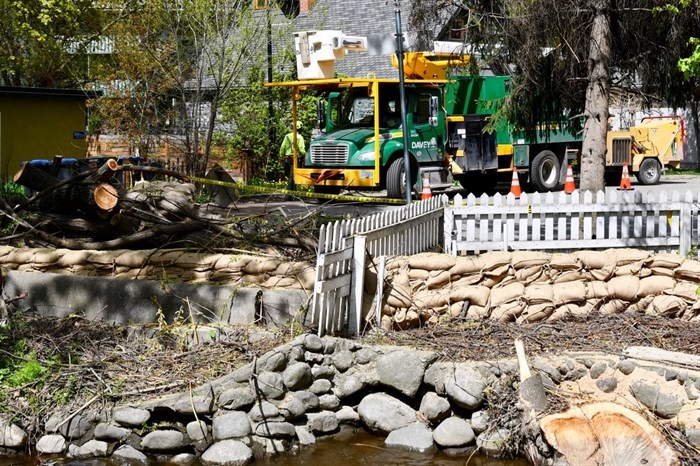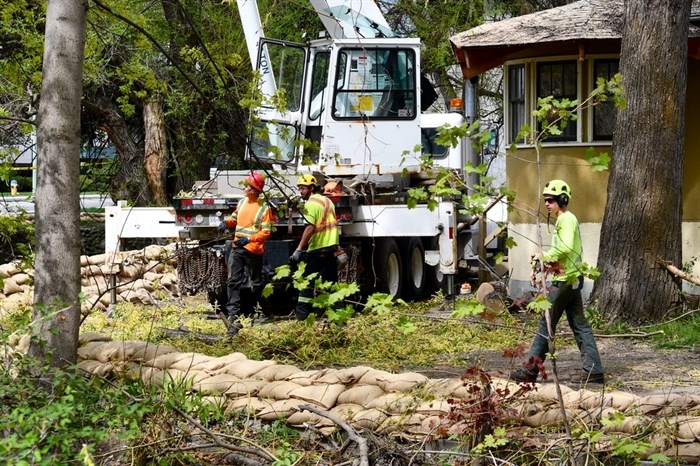
Work crews remove trees and vegetation along Mill Creek in Kelowna, Wednesday, May 2, 2018.
(JOHN MCDONALD / iNFOnews.ca)
May 02, 2018 - 4:00 PM
KELOWNA - With the waters of Mill Creek still rising and crews working urgently to clear the creek channel of debris and vegetation, the question has to be why did the city wait so long?
It comes down to the permits needed by the city to work on the creek which is governed by the provincial Ministry of Environment, according to the City of Kelowna’s director of infrastructure Alan Newcombe.
“We needed environmental permits to go into the stream and we needed to wait for better weather,” Newcombe said. “We started as soon as we received the permits.”
Mill Creek is subject of a local emergency declared last week as water levels rose. Newcombe said he’s heard no reports this year of houses being flooded, in contrast to last year when many homeowners and some businesses reported flooded basements and crawl spaces.
Crews have for the last several weeks been dredging parts of Mill Creek and cutting back trees and vegetation in an effort to increase the volume of water the creek can handle during spring freshet.
The work being done now is actually in response to last year’s spring flooding which saw Mill Creek overflow its banks in several areas, Newcombe said.
“It just happened to tie in perfectly with the remedial work,” he added.

Work crews remove trees and vegetation along Mill Creek in Kelowna, Wednesday, May 2, 2018.
(JOHN MCDONALD / iNFOnews.ca)
By increasing volume in the creek, Newcombe says the velocity of the creek will also increase and help flush out old sediment and prevent new accumulations.
The process began last fall with the completion of an extensive environmental and engineering assessment of Mill Creek, a requirement for the permits required to perform the remedial work.
Crews must be mindful of which species of tree is being removed and must consider wildlife habitat when performing their work.
“They must leave certain trees or if they find nests,” Newcombe added.
He expects the bulk of the remedial work to be done by the end of this week, although they may return later this summer.
The rest is up to Mother Nature, he added, which last year added some intense rainstorms just as the spring freshet was sending record volumes of water down Mill Creek.
“That could happen in any given year,” he said. “Last year, the snowpack was actually lower than this year.”
He said the local state of emergency will remain in place until further notice.
To contact a reporter for this story, email John McDonald or call 250-808-0143 or email the editor. You can also submit photos, videos or news tips to the newsroom and be entered to win a monthly prize draw.
We welcome your comments and opinions on our stories but play nice. We won't censor or delete comments unless they contain off-topic statements or links, unnecessary vulgarity, false facts, spam or obviously fake profiles. If you have any concerns about what you see in comments, email the editor in the link above.
News from © iNFOnews, 2018